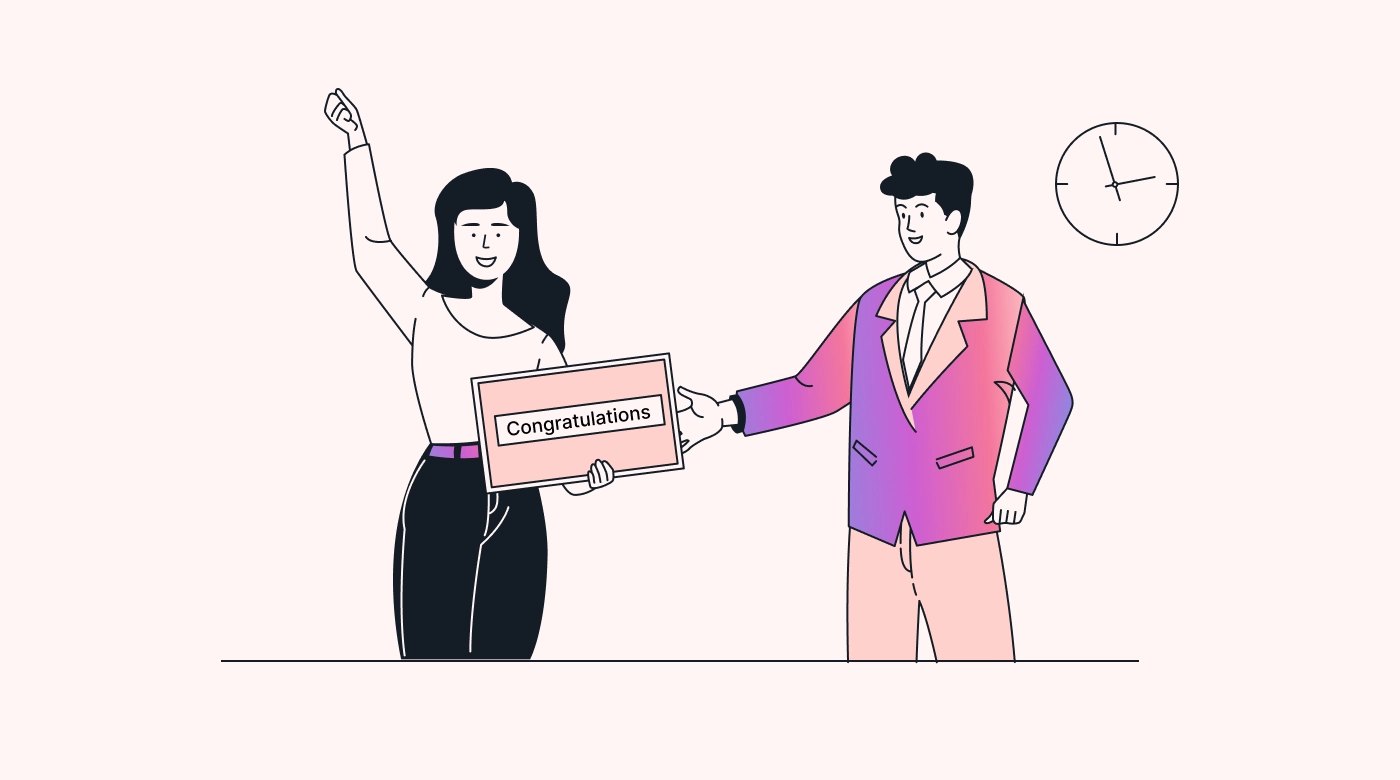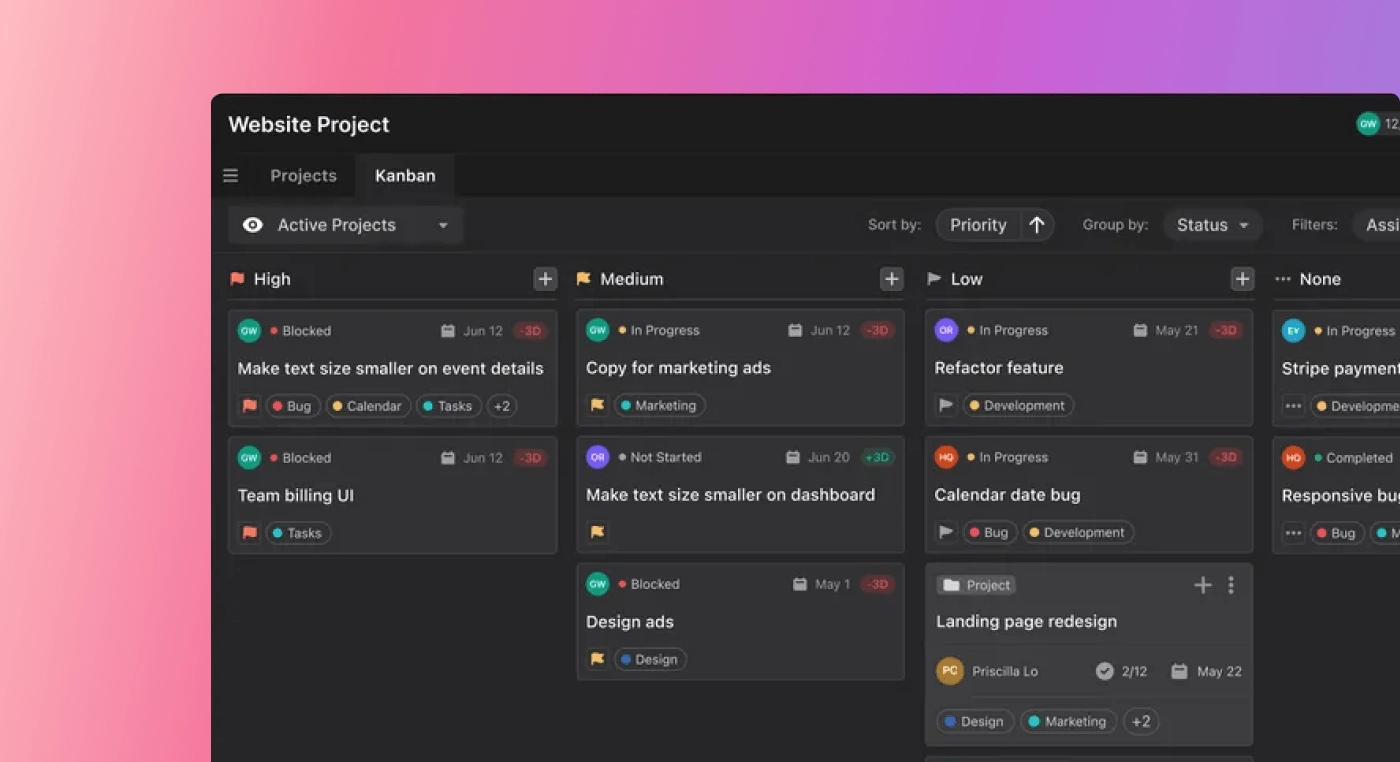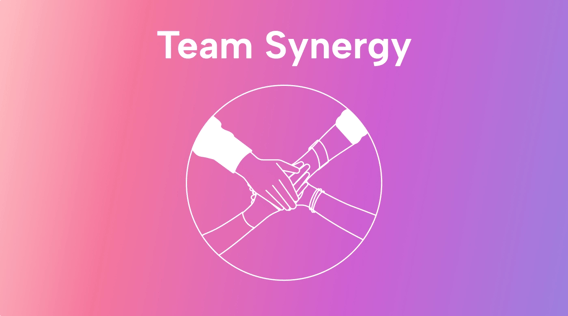As a team leader, you know the challenges of molding a group of diverse individuals into a high-performing unit.
The quest for team synergy can seem complex due to differences in personalities, skills, and working styles.
So, how do you build a team that just works?
This article unlocks the secrets of achieving greater team synergy. It delves into synergy’s essence and benefits. It also presents practical strategies for creating an environment where collective well-being and success aren’t lofty dreams but a reality.
What is team synergy?
“Synergy” translates to “working together.” It comes from the Greek syn, meaning together, and ergon, meaning work.
In teams, synergy refers to a team culture where teammates work together so well that their collective output is greater than the sum of the members’ individual efforts. This points to the importance of interdependence and cooperative action if you want to achieve superior results.
Employers and employees alike recognize the need for synergistic cooperation in the workplace. In fact, more than 50% of workers in the United States say that collaboration is a key aspect of their jobs, and 75% consider effective teamwork and collaboration to be very important in the workplace.
Plus, employees experience roughly 17% more job satisfaction when they have an opportunity to participate in collaborative work. And 86% of managers and team leaders point to a lack of collaboration as the main reason projects fail.
So, what gives? Why isn’t every team using synergy if everyone agrees it’s a good thing?
To answer this important question, let’s take a look at what synergy looks like and how it can turn a group of individuals into a cohesive, productive, and happy team of coworkers.
How team synergy manifests in the workplace
Imagine a vibrant environment that pulsates with energy. Individual strengths are woven into a fabric of collective achievement, and ideas flow freely in an atmosphere of trust and respect. The air buzzes with the excitement of shared successes, and the warmth of genuine connections generates a sense of belonging.
 |
Sounds too good to be true? Let’s look more closely at some characteristics of synergistic teams that are absolutely within reach for most groups.
Characteristics of synergistic teams
In a synergistic environment, teams use open and effective communication. Ideas and feedback flow freely, with no one taking offense or feeling stifled when it’s time to contribute.
The team members have a strong sense of shared purpose and align around common goals. Their diverse skills and perspectives are not a hindrance but are actively used for everyone’s benefit.
A synergistic team also completes projects efficiently, and creative solutions and innovations emerge from collaborative brainstorming and problem-solving sessions. The team is resilient in the face of challenges and knows how to adapt quickly and creatively to changes and obstacles.
All of these characteristics are attainable. The trick is to put them in action all at once — more on how to do that in a moment. But first, what happens when teams lack real synergy?
Consequences of a lack of team synergy
Here are just some of the issues that can come from a lack of team synergy:
More challenges and obstacles
Without synergy, miscommunications and misunderstandings become frequent and can lead to inefficiencies. Conflicts arise over roles, contributions, and the direction of the team's work.
Plus, morale and engagement decline as the team members feel disconnected from their objectives and each other.
Negative impact on performance and outcomes
Productivity suffers, with tasks taking longer to complete and results falling short of expectations. The team struggles to innovate and solve problems effectively. They might resort to less effective solutions just to meet deadlines. Not only that but the turnover rate increases as team members become disillusioned with the team's lack of cohesion and success.
Does any of this sound familiar? If so, then it’s time to take a fresh look at why pursuing team synergy is a worthy goal.
 |
How synergy benefits companies and individuals
The benefits of synergetic teams can be divided into two categories: benefits for the company or organization and benefits for the individual workers.
The organizational benefits of team synergy
Here are three key advantages a company with synergistic teams can have:
1. More innovation and creativity
The combination of different perspectives and skills generates an environment that’s perfect for innovation. Team members feel more comfortable taking risks and proposing novel solutions since they know they’re supported by the group's collective effort.
2. Improved performance and productivity
Synergy makes it possible for teams to accomplish their tasks more efficiently since each member's strengths are combined for a coordinated effort. Plus, the quality of their work improves simply because they’re more engaged and inspired to contribute their best.
 |
3. Increased employee satisfaction and retention
Because the team members feel valued and see their contributions making a difference, working in a synergistic team can increase job satisfaction, as well.
A positive team environment boosts morale, which, in turn, reduces turnover and attracts fresh talent. In fact, companies that promote collaboration and communication can potentially reduce employee turnover rates by 50%.
The personal benefits of team synergy
The positive effects of synergy on individual employees’ emotional and psychological well-being are also noteworthy.
1. Increased sense of purpose
Working in a synergistic team environment can significantly improve an employee’s sense of purpose since they see that their contributions are valuable in achieving the team’s goals.
2. Reduced stress
A collaborative atmosphere reduces the usual stress and anxiety often associated with workplace challenges since individuals feel more supported by their teammates.
3. A stronger sense of belonging
The trust and open communication that characterize synergistic teams also reduce feelings of isolation and increase emotional support among colleagues. This sense of inclusion and importance contributes to a positive self-concept and greater self-esteem.
As a result, employees within these teams tend to experience higher job satisfaction, motivation, and overall well-being. This benefits both their professional and personal lives by promoting a healthier work-life balance and emotional resilience.
What does it take for team members to work synergistically?
Synergy doesn’t just happen magically. For individual employees to feel motivated and comfortable working in a synergetic fashion, several psychological needs and conditions must be met. These include the following:
1. Trust and safety
The cornerstone of team synergy is having an atmosphere of trust within the team. Employees must feel psychologically safe to express their ideas, share their opinions, and show vulnerability without fear of criticism or negative repercussions.
2. Recognition and appreciation
Teammates need to feel that their contributions to reaching milestones are recognized and valued.
Appreciation from leaders and peers boosts self-esteem and reinforces individuals’ roles and importance within the team. This, in turn, motivates them to keep actively contributing.
3. Clear purpose and shared goals
Employees are more likely to engage in synergistic work when they know the team's purpose and objectives. So, aligning their personal goals with the team’s goals helps them stay motivated and committed.
4. Autonomy and empowerment
Providing employees with a sense of autonomy — giving them the freedom to make decisions about their work and the ways to achieve it, for instance — empowers them in new ways.
This empowerment drives initiative and innovation, both of which are key components of a synergistic team.
5. Competence and skill mastery
Opportunities for skill development and mastery also contribute to an individual’s motivation to work synergistically.
When employees feel competent and capable of contributing effectively, their confidence and desire to collaborate increase.
 |
6. Interpersonal relations and social support
Strong, positive relationships among team members are another vital element of workplace synergy. Individuals are more willing to collaborate effectively when they see support and camaraderie from their colleagues.
7. Fairness and equity
Perceptions of fairness in workload distribution, decision-making processes, and recognition are also important. When employees see that they are being treated fairly, they are more likely to feel respected and valued. This increases their willingness to contribute to the team effort.
8. Constructive feedback and growth opportunities
Constructive feedback, coupled with opportunities for personal and professional growth, encourages continuous improvement and learning. This positive reinforcement motivates individuals to engage in collaborative efforts and strive for collective success.
Creating a work environment and culture that meets all these psychological needs is a critical step in building team synergy.
How to cultivate team synergy
Team leaders can play a significant role in helping teams unlock their potential and reach synergy.
Here are five best practices to help:
1. Implement effective leadership strategies
Outline the team's purpose and goals. Make sure all members understand and are committed to them. If possible, let your team help make these goals to give them more ownership over them.
Also, model and promote open communication and transparency. Encourage team members to share ideas and concerns without fear of judgment.
2. Build a culture of collaboration
Develop trust among team members through consistent, positive interactions and by demonstrating reliability and integrity.
A helpful approach is to celebrate team achievements collectively rather than just rewarding or praising individual members. This reinforces the value of collaboration and shared success.
 |
3. Make the most of diversity and inclusivity
To create a synergistic team, it’s important to recognize and value each member’s unique contributions. Different backgrounds, opinions, and skills should be seen as assets rather than obstacles.
To demonstrate your company’s commitment to inclusivity, facilitate team activities in a way that allows for all voices to be heard in discussions and decision-making processes.
4. Invest time in sustained team synergy
It’s one thing to achieve precious moments of synergy. But it’s another to sustain it.
To maintain what you’ve built, provide ongoing opportunities for team development and bonding, such as training sessions and social events. Regularly review the team's functioning, identify areas for improvement, and reinforce the elements in the team that contribute to high-quality synergy.
In this context, it’s important to realize that with each change in team dynamics (losing a team member or gaining someone new, for example), the process of synergy-building goes back to zero.
Never assume that the team will just absorb these changes automatically. It won’t. So, make a strong effort to rebuild team synergy after each major change.
How technology can reinforce team synergy
Human leadership is not the only thing you need to build strong team synergy.
Having the right project management technology in place helps, too. Motion's intelligent, AI-driven task and project management software, for instance, can also play a key role in increasing the synergy level in your team.
The Project Manager uses automated scheduling, task allocation, and prioritization to reduce the burden — and tediousness — of team coordination via email. It measures how much your team can accomplish, builds every teammate a custom schedule, and automates 90% of project planning.
 |
Ready to pursue a new level of team synergy?
Team synergy transforms good teams into exceptional ones. The dynamic interplay between individual talents and perspectives leads to more efficiency, innovation, and job satisfaction.
Achieving this level of synergy requires not just a commitment to shared goals and open communication but also the right collaboration tools. Motion facilitates transparent communication and real-time updates to keep all team members in sync and connected.
To bring your team's synergy to the next level, try Motion for free for 7 days.

A certified content writer and SEO strategist, Carla Groenewegen writes about success principles and practices aimed at SMBs and not-for-profit organizations.




